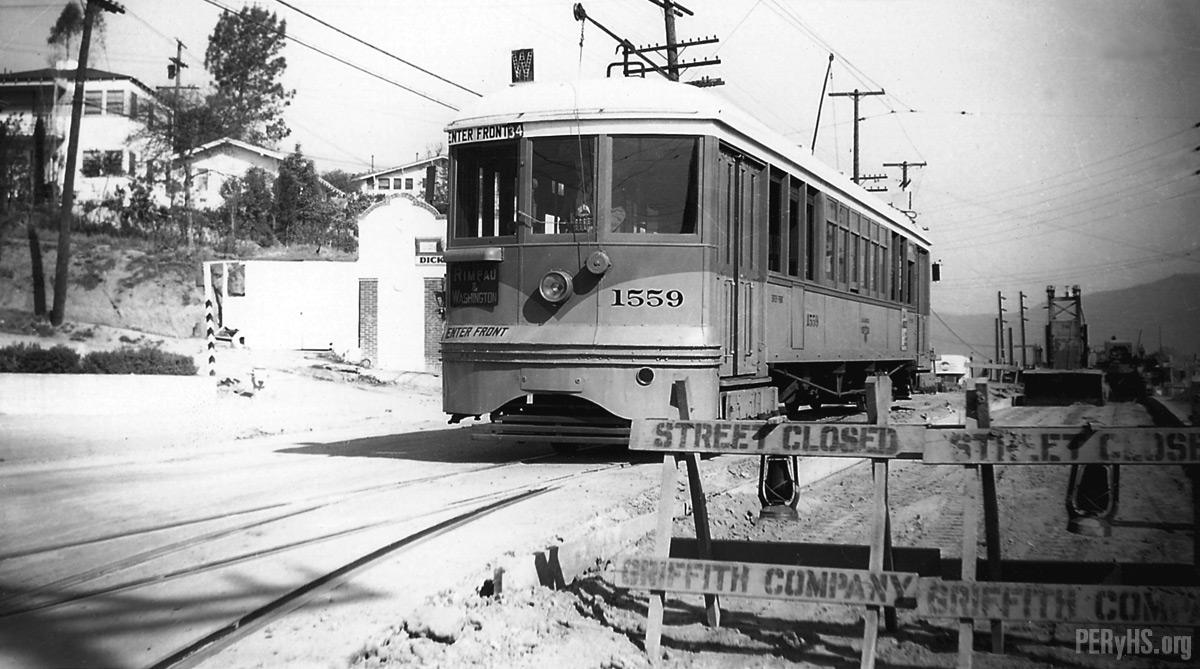1559 on the Last Day
Los Angeles Transit Lines (ex-Los Angeles Railway) W Line car no. 1559 poses at North Figueroa Street and Buena Vista Terrace on the last day of service at this portion of the line: April 17, 1948.
Alan Weeks Photo, Alan Weeks Collection
Recent Posts
Showing 5 comments



This is one of the LARy “homebrew” cars. The 1500-class were built in the local shops to resemble the 1200-class cars but with wooden frames (note the truss rods). 1559 is the sold survivor of this group, being preserved at Orange Empire. It’s marginally operable, but “not ready for prime time.”
“Constructed as one of 60 type K cars by the Los Angeles Railway, No. 1559 came out of the shops in 1925 and was assigned to the Eagle Rock-Hawthorne line. In 1930 it moved to the W line. 1559 was converted to a K-4 class for one- or two-man operation after 1938. With Los Angeles Transit Lines taking over in 1945, the car was “streamlined” by the addition of skirting and lifeguard fenders. 1559 was retired from service and purchased by the society in 1955. It did a stretch at Travel Town until 1958 when it was moved to its present location in the narrow-guage carbarn at Orange Empire Railway Museum near Perris”…source, Pacific Railroad Society 40th Anniversary Compendium with 1962-75 Railroad Chronology, P.R.S., Inc. 1977. [Caption with Tom Nelson photo from 21 Sept. 1968 indicates car had recieved recent paint job at OETM in Perris…now OERM.]
In case any younger readers are wondering about those “Barn-burners” to the right, such lanterns remained in useage well into the 1960’s until the new-fangled plastic-fantastik battery box flashy things gradually replaced them. Last of the fuel-fired night-lit warning lanterns that I can recall in use were around 1969-70. And then, poof! All were gone.
I remember they had something dark and round that must have held kerosene but with no glass that they just placed on the pavement ( at night after they lite it ) that produced an ominous yellow flame that was a warning. Not so much because of construction but more of a accident warning. They looked like little bombs about to go off! Then it was all flares and/of flashing strobe lights.
I think those “bombs” would be technically classified as torches just like the handled & spouted ones used by railroads for a light source. The wick was probably a thick round rope-style jutting out at the top and giving rise to the large flame. The base would probably have been flat for stability in case it got bumped. While flares were essentially self extinguishing, they created clouds of smoke that obscurred those on the ground from on-coming drivers. No doubt some fender benders would occurs as panicky drivers slammed on the brakes. It was quite a light show though.